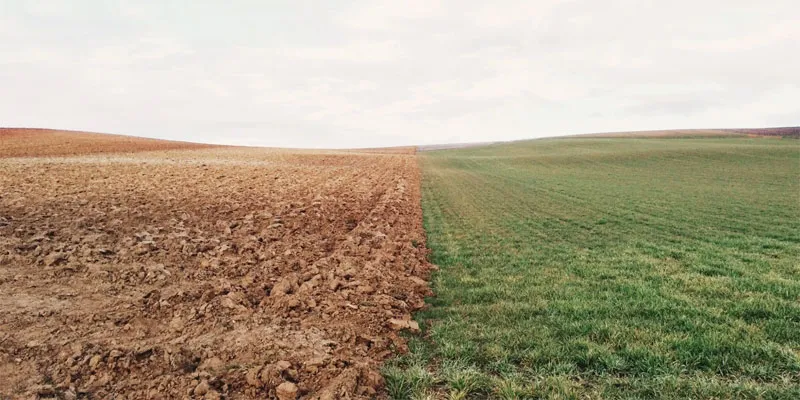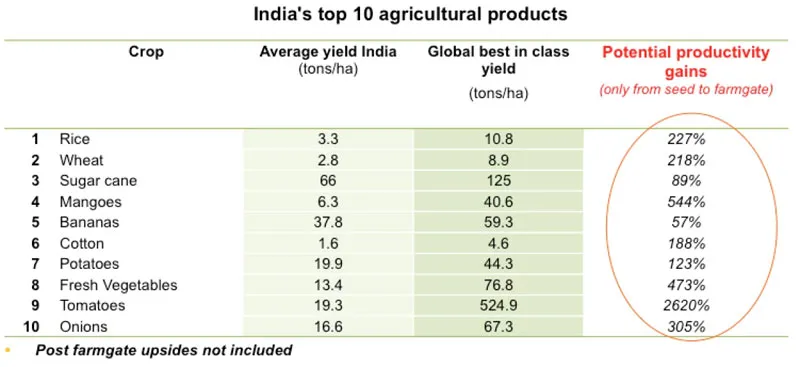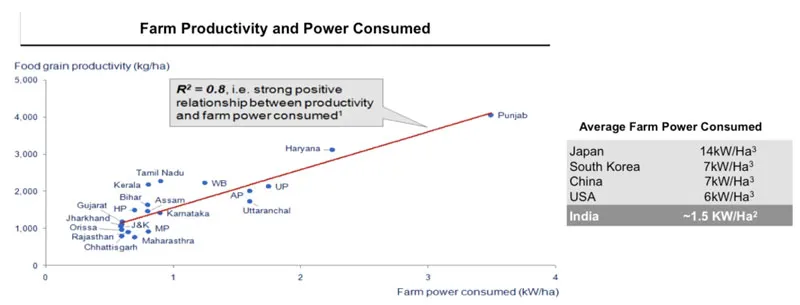Notes from the field: An Indian perspective on the Global AgTech Week
With the global population expected to rise to 9 billion by 2050, the world will have to figure out a way to grow 60% more food with less land, water, fertilizers and pesticides. If that doesn’t sound daunting enough, sample this:

We will have to somehow grow more food in the next 35 years, than we have ever grown since the dawn agriculture.
This terryfing implication is not lost on those of us who invest in Agriculture and AgTech. In fact, it is the very reason we choose to dedicate our resouces to support businesses in this sector. I recently had the opportunity to speak at the Global AgTech Week held in San Francisco. My objective was to learn more about how developed economies look at Agriculture and the technology that’s driving the next wave of productivity. The attendee list was a mix of experienced US farmers, startups building everything from drones to data platforms, and investors looking to wrap their heads around AgTech as a nascent, although burgeoning, asset class.
I came away from the event with renewed appreciation for how technology can be leveraged to solve complex challenges even in the most time honoured of occupations (after all, we have been farming for over 10,000 years). At the same time, these conversations impressed upon me the fact that the challenges facing Indian agriculture are very different in nature.
Productivity and Distribution are fundamental problems in Indian Agriculture
The US agriculture sector is dominated by broadacre cultivation of massive farms. The average US farm size is upwards of 450 acres compared to around 4.5 acres/farm in India. In other words, the average American farm is a hundred times larger than an Indian farm. This results in several crucial differences in the fundamentals of both farm productivity and the agricultural supply chain.
The average American farm is a 100x larger than an Indian farm
On the productivity front, there exists a tremendous “Yield Gap” between the average yields of Indian farms when compared to global peers. The exhibit below captures the magnitude of the shortfall.

One of the obvious reasons for this gap is poor quality farm inputs (seeds, fertilizers), along with a lack of farmer education on best practices in farming. In addition, small farm sizes imply that farmers often cannot afford mechanization that is commonplace in developed countries. My colleague Kartik has written at length on this topic.
A good proxy for the extent of mechanization is energy consumed (kilowatts) per hectare of cultivated land. While the US and China consume between 6-7 kW/hectare, India is at a meagre 1.5 kW/hectare. This shows that there exists a tremendous opportunity to boost the productivity of Indian agriculture by an order of magnitude.

The agricultural supply chain in India only serves to compound the shortfall created by the yield gap driven by poor productivity. There are up to 6 intermediaries post-harvest which lead to both loss in quality due to poor handling and margins being skimmed at each level for no value addition. Multiple intermediaries also means that upto 40% of our produce is wasted in transit, thanks in no small measure to the lack of cold-chain transportation. India has only 8,000 refrigerated trucks capable of transporting fresh produce. This means that for the 104 million tonnes of fresh produce that are transported every year in the country only 4 million tonnes moves through refrigerated transport.
Upto 40% of India's produce is wasted in transit. And yet, India has only 8,000 refrigerated trucks capable of transporting fresh produce.
The conversations in the conference centred around biologicals that would provide incremental productivity improvements (5-10%) to high-quality input based farming. In India, the productivity challenge requires a much more full-stack approach spanning input sales, farmer education, farm mechanization and bringing efficiencies into the supply chain. The rewards for these measures are transformational productivity improvements (2-5x) against a few percentage points.
Capturing farm-level data: The elusive goal
Data has become the buzz word for businesses in any sector and agriculture is no exception. At the conference, I met a bevy of startups looking to provide “big-data” services to farmers. Each of them have subtle differences in their approach, but the principle remains largely the same; gather millions of data points at the farm-level on everything—crop-varieties, soil quality, moisture levels, productivity and the weather—and then analyse them to find patterns in productivity and to provide benchmarks for yield for a given set of input conditions.
Collecting accurate and granular data at the farm level remains the hardest challenge. The new wave of “AgData” startups rely on the ability of modern agricultural equipment in the US to record everything from the way the seeds are planted to harvest yield. Weather and crop price data are gathered from independent sources such as satellites and commodity exchanges to complete the data picture. By aggregating this data at the national level, one can arrive at informed decisions about which agricultural products and practices will produce the highest output, thus maximizing profits.
However, even the most well-funded startups admitted that the sheer variety of data sources and on-ground integration issues mean that there are serious lacunae in the quality of data. To manage this gap, data service providers hire agronomists to manually sift through the data and separate the signal from the noise. These challenges are magnified in a country like India where the domination of small-hold farming means that collecting the data at the farm level is at least a 100x harder (as each farm is on average a 100 times smaller than those in the US).
The key challenge for companies looking to build data plays in Indian agriculture will be to regularly capture data from millions of farmers in an efficient manner. And since good quality input data is the very basis for great insights, Indian agriculture still has a long way to go before we are able to leverage the benefits of such platforms. My view is that the answer lies in a unique social engineering model that will incentivize farmers to regularly share accurate data. One potential model that comes to mind is the “Agropreneur” approach developed by Pradan. The Agropreneur essentially is an individual from the catchment area of the farms that works with farmers as a community service provider to accomplish several goals at once, providing farm extension services, helping them access high quality inputs through a partnership with input manufacturers, and help sell/market their produce by finding larger buyers. By establishing a deep engagement with the farmer, the Agropreneur might be able to collect high quality data during the process.
Final thoughts for Indian AgTech: Focus on the basics
High quality farm inputs, farm mechanization and supply chain optimization are the bedrock of farm productivity. Using big data, drone/satellite imaging, and engineered biological inputs to boost productivity makes sense only once the bedrock is firmly in place. While the US agricultural ecosystem has evolved to the point where it is now chasing gains that measure in the percentage points by leveraging the next generation of technologies, India is in need of those “bedrock” technologies that the developed world takes for granted.
I view this as a tremendous opportunity: while India is either the largest or second largest producer of most key crops today; there is tremendous headroom for growth by an order of magnitude once we have the right infrastructure in place. That is why, at Aspada, we have diligently focused on making investments in the agricultural supply chain and farm mechanization. As we are fond of saying, we invest in entrepreneurs that solve hard problems. Very few problems are harder than building the infrastructure for Indian agricultural productivity.







